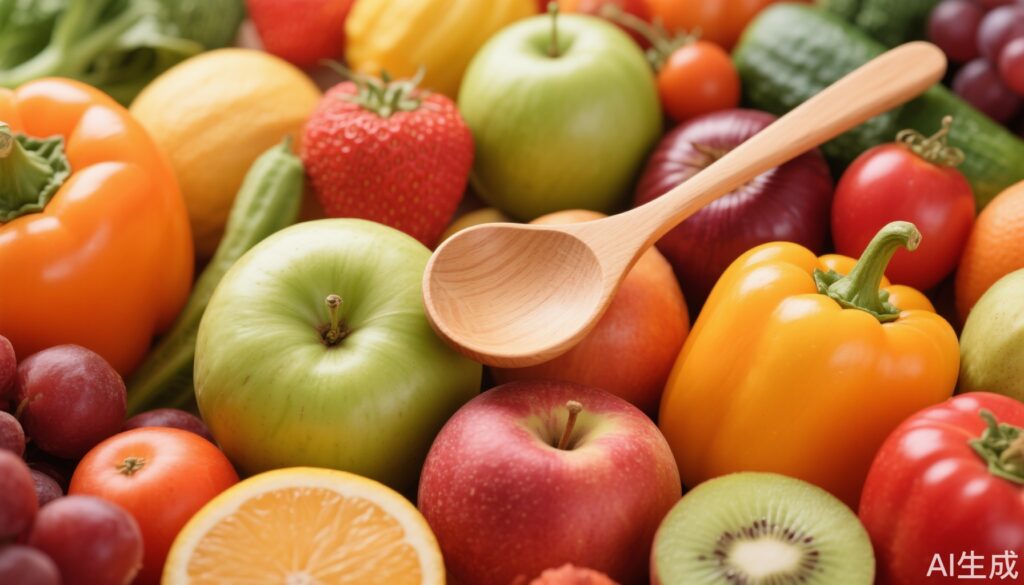Introduction
Have you ever woken up feeling unusually sluggish, noticed unexplained skin redness or acne, or experienced joint pain on rainy days? These seemingly trivial symptoms might be your body’s way of signaling chronic inflammation. While inflammation is a natural defense mechanism, chronic inflammation can be a silent threat to health.
Understanding Inflammation
Inflammation is an essential part of the body’s immune response. When viruses invade or tissues become damaged, the immune system activates an inflammatory response, deploying white blood cells to the affected area to eliminate foreign invaders. Acute inflammation is vital for healing, but when stress is excessive, diet is unbalanced, or sleep patterns are disrupted, this defense mechanism can turn into a prolonged battle, evolving into chronic inflammation that persists for months or even years.
Chronic inflammation can be likened to a “frog in boiling water,” slowly disrupting bodily functions. Research has linked it to cardiovascular diseases, diabetes, arthritis, and even certain cancers (1). Unlike acute inflammation, chronic inflammation may not present obvious symptoms, yet it quietly damages cells and tissues.
Scientific and Clinical Evidence
Today, we delve into the natural “anti-inflammatory weapons” hidden within our meals, exploring foods that can transform your dining table into a “health defense line.” Let’s unlock this dietary health code.
Eight Anti-Inflammatory Foods
1. Colorful Fruits and Vegetables
Turning your plate into a “color palette” is the first step in combating inflammation. Deep green vegetables like spinach and kale are rich in lutein and zeaxanthin; orange-yellow fruits and vegetables like carrots and pumpkins are high in β-carotene; berries such as blueberries and strawberries are abundant in anthocyanins. These natural pigments are antioxidants that can neutralize free radicals causing inflammation. A systematic review published in the American Journal of Clinical Nutrition analyzed 83 studies, revealing that increasing fruit and vegetable intake—especially five servings or more a day—can significantly reduce blood levels of multiple inflammatory markers like CRP, IL-6, and TNF-α (2).
2. Whole Grains
While white rice and white bread offer a refined taste, they lose the bran and germ during processing, leaving mainly starch. Whole grains like oats, brown rice, and quinoa retain their complete nutritional structure, with dietary fiber acting as a “gut sweeper” to feed beneficial bacteria and reduce intestinal inflammation. A study involving 259 healthy women aged 18-44 found that consuming at least one serving of whole grains daily over two menstrual cycles resulted in hs-CRP levels about 12% lower than those who didn’t eat whole grains (3).
3. Quality Nuts
Don’t be deterred by the “high-calorie” label; nuts are actually concentrated anti-inflammatory nutrition packets. Walnuts are rich in alpha-linolenic acid (a type of Omega-3), almonds are full of vitamin E, and some nuts contain selenium, enhancing immune cells’ anti-inflammatory abilities. A study spanning over 30 years with more than 210,000 participants found that consuming five or more servings (28 grams each) of nuts weekly reduced cardiovascular disease risk by 14% and coronary heart disease risk by about 20% compared to non-consumers (4).
4. Soy Products
Soy products like tofu, natto, and chickpeas are not only excellent sources of plant protein but also contain soy isoflavones, which can regulate inflammation responses, especially beneficial for women. A 2022 publication in The Journal of Nutrition analyzed 24 high-quality randomized controlled trials, showing that postmenopausal women consuming soy products daily experienced a statistically significant average reduction of about 9% in CRP levels (5).
5. Deep-Sea Fish
Fatty deep-sea fish like salmon, sardines, and Atlantic mackerel contain anti-inflammatory “ace cards”—EPA and DHA. These Omega-3 fatty acids can inhibit the synthesis of inflammatory factors, akin to “applying brakes” to an overactive immune system. Studies indicate that consuming deep-sea fish twice weekly can reduce rheumatoid arthritis risk by 35% (6).
6. Flaxseed
For vegetarians, flaxseed is an excellent source of Omega-3. However, whole flaxseeds are difficult to digest, so it’s best to grind them into powder or extract oil. Sprinkle them on yogurt or mix into salad dressings to enhance flavor and anti-inflammatory benefits. A meta-analysis published in the journal Cytokine analyzed 40 articles on flaxseed’s effects on inflammatory markers, indicating that consuming flaxseed and its products can lower levels of CRP, IL-6, and VCAM-1 (7).
7. Tea and Coffee
Tea and coffee are not just “pick-me-up” tools but also beneficial in fighting inflammation. Green tea contains catechins that inhibit pro-inflammatory enzyme activity, while white tea, minimally fermented, preserves more natural polyphenols and has been shown to possess even stronger antioxidant abilities compared to green tea. Pure black coffee (without added sugar or milk) contains chlorogenic acid, which can reduce inflammation. A 2018 review in Nutrition Reviews analyzed 30 large-scale studies involving 1.18 million participants, showing that the highest coffee consumers had a 29% lower risk of developing type 2 diabetes compared to those who rarely drank coffee, with each additional cup reducing risk by an average of 6% (8).
8. Spices
Turmeric contains curcumin, an “anti-inflammatory star,” but it is challenging for the body to absorb. Pairing it with black pepper (containing piperine) can enhance bioavailability. Ginger’s gingerols can alleviate muscle soreness and joint inflammation. Adding a few slices of ginger to stir-fries not only enhances flavor but also combats inflammation. A study involving rheumatoid arthritis patients showed that consuming 500mg of curcumin daily significantly reduced serum hs-CRP compared to placebo over eight weeks (9).
Beyond Diet: Lifestyle Practices
Incorporating anti-inflammatory foods is just the beginning; a healthy lifestyle maximizes anti-inflammatory benefits.
– Engage in 30 minutes of brisk walking, swimming, or other aerobic exercises daily to promote blood circulation and reduce the accumulation of inflammatory factors.
– Ensure 7-8 hours of sleep, as sleep deprivation can lead to immune system “overdrive,” exacerbating inflammation.
– Try meditation and deep breathing to relieve stress, lower cortisol levels, and boost immune function.
Conclusion
Combatting inflammation is a marathon, not a sprint. Rather than striving for a “perfect diet,” incorporate these foods into daily life: add blueberries to breakfast, pair lunch with leafy greens, and enjoy salmon for dinner. Coupled with regular routines and moderate exercise, these practices can gradually quell the “small flames” within and contribute to a healthier future.
References
1.Pamuk F, Kantarci A. Inflammation as a link between periodontal disease and obesity. Periodontol 2000. 2022 Oct;90(1):186-196. doi: 10.1111/prd.12457 IF: 15.7 Q1 . Epub 2022 Aug 2. PMID: 35916870 IF: 15.7 Q1 .
2. Cassidy A, Rogers G, Peterson JJ, Dwyer JT, Lin H, Jacques PF. Higher dietary anthocyanin and flavonol intakes are associated with anti-inflammatory effects in a population of US adults. Am J Clin Nutr. 2015 Jul;102(1):172-81. doi: 10.3945/ajcn.115.108555 IF: 6.9 Q1 . Epub 2015 May 27. PMID: 26016863 IF: 6.9 Q1 ; PMCID: PMC4480670 IF: 6.9 Q1 .
3.Gamel TH, Abdel-Aal EM, Tucker AJ, Pare SM, Faughnan K, O’Brien CD, Dykun A, Rabalski I, Pickard M, Wright AJ. Consumption of whole purple and regular wheat modestly improves metabolic markers in adults with elevated high-sensitivity C-reactive protein: a randomised, single-blind parallel-arm study. Br J Nutr. 2020 Dec 14;124(11):1179-1189. doi: 10.1017/S0007114520002275 IF: 3.0 Q2 . Epub 2020 Jun 29. PMID: 32594915 IF: 3.0 Q2 .
4. Glenn AJ, Aune D, Freisling H, Mohammadifard N, Kendall CWC, Salas-Salvadó J, Jenkins DJA, Hu FB, Sievenpiper JL. Nuts and Cardiovascular Disease Outcomes: A Review of the Evidence and Future Directions. Nutrients. 2023 Feb 11;15(4):911. doi: 10.3390/nu15040911 . PMID: 36839269 ; PMCID: PMC9964942 .
5.Bajerska J, Łagowska K, Mori M, Reguła J, Skoczek-Rubińska A, Toda T, Mizuno N, Yamori Y. A Meta-Analysis of Randomized Controlled Trials of the Effects of Soy Intake on Inflammatory Markers in Postmenopausal Women. J Nutr. 2022 Jan 11;152(1):5-15. doi: 10.1093/jn/nxab325 . PMID: 34642749 .
6. Dong Y, Greenwood DC, Webster J, Uzokwe C, Tao J, Hardie LJ, Cade JE. Dose-Response Associations Between Diet and Risk of Rheumatoid Arthritis: A Meta-Analysis of Prospective Cohort Studies. Nutrients. 2024 Nov 26;16(23):4050. doi: 10.3390/nu16234050 . PMID: 39683447 ; PMCID: PMC11644016 .
7. Askarpour M, Karimi M, Hadi A, Ghaedi E, Symonds ME, Miraghajani M, Javadian P. Effect of flaxseed supplementation on markers of inflammation and endothelial function: A systematic review and meta-analysis. Cytokine. 2020 Feb;126:154922. doi: 10.1016/j.cyto.2019.154922 . Epub 2019 Nov 15. PMID: 31739218 .
8.Carlström M, Larsson SC. Coffee consumption and reduced risk of developing type 2 diabetes: a systematic review with meta-analysis. Nutr Rev. 2018 Jun 1;76(6):395-417. doi: 10.1093/nutrit/nuy014 . PMID: 29590460.
9. Hsueh HC, Ho GR, Tzeng SI, Liang KH, Horng YS. Effects of curcumin on serum inflammatory biomarkers in patients with knee osteoarthritis: a systematic review and meta-analysis of randomized controlled trials. BMC Complement Med Ther. 2025 Jul 4;25(1):237. doi: 10.1186/s12906-025-04951-6. PMID: 40615851; PMCID: PMC12231615.



